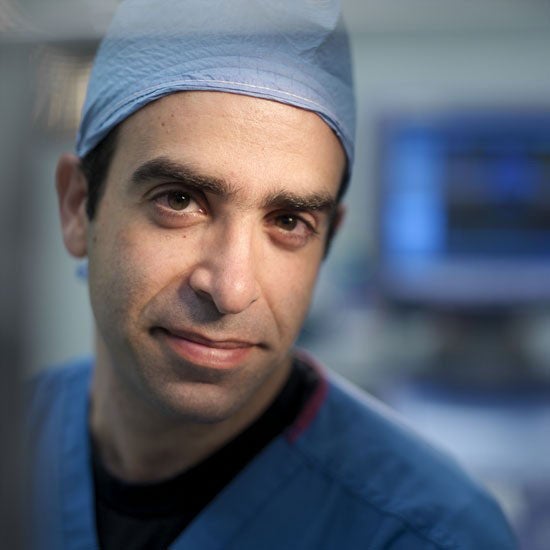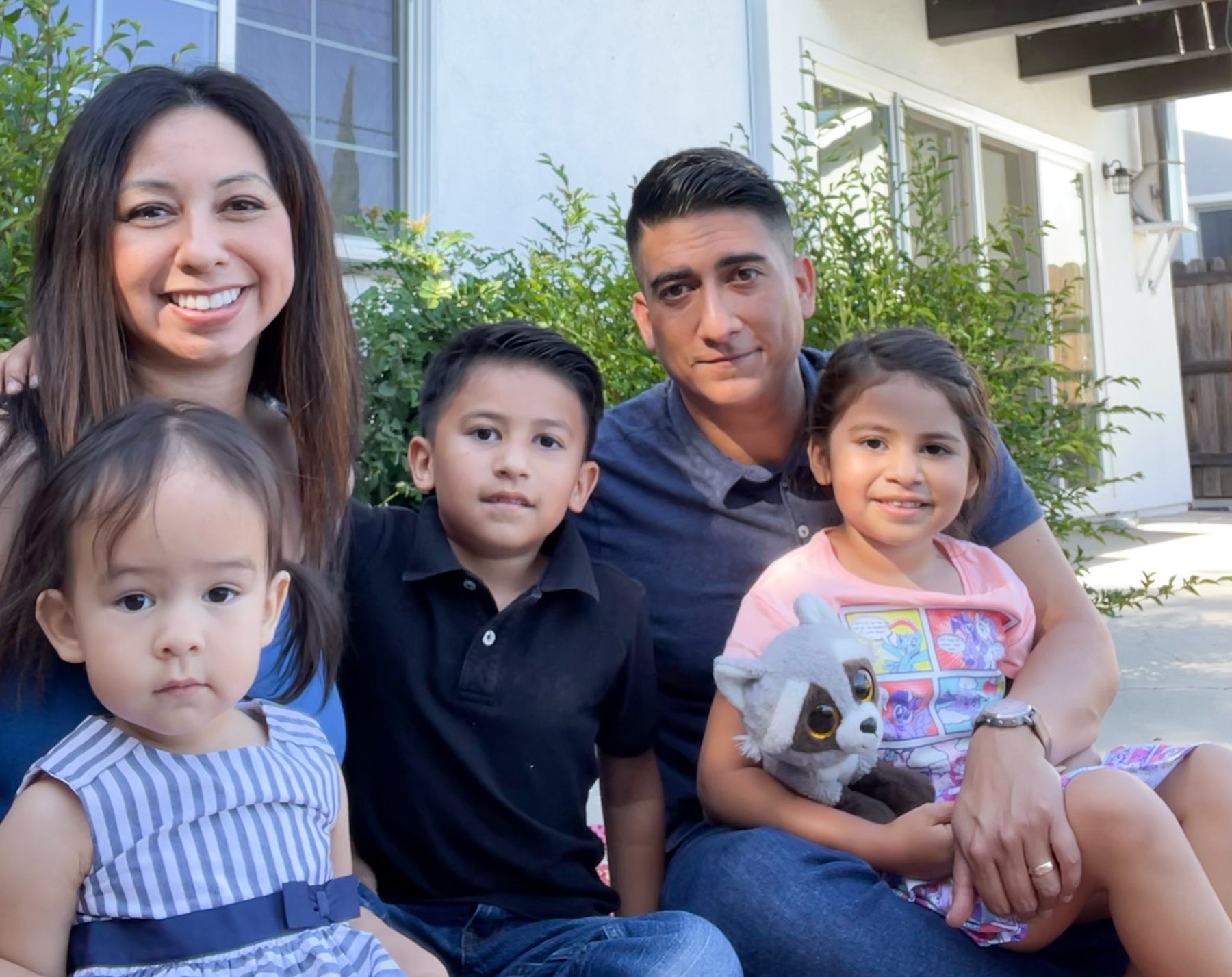Two years later, young girl’s family and USC doctor look back on groundbreaking fetal surgery
When Abby Giron was diagnosed with in utero spina bifida, her family was distraught. Then Ramen Chmait’s innovative surgery changed everything.
Gilda Giron couldn’t help but tear up as she reflected on the past month: Her daughter, Abby, celebrated her second birthday and took her first steps — steps that seemed improbable not so long ago.
Those milestones appear even greater given what Gilda and her husband Arnuf went through just over two years ago: 13 weeks into Gilda’s pregnancy, they were told Abby had myelomeningocele, the most severe type of spina bifida. This type of spina bifida leaves the spinal cord completely exposed. If untreated, it causes fluid buildup in the brain as well as progressive nerve injury to the exposed spinal cord, which can result in abnormal brain development and various degrees of paralysis of the legs. Myelomeningocele affects approximately 1 out of every 800 babies.
What followed Abby’s diagnosis was a groundbreaking procedure conducted by a team led by Ramen Chmait, director of Los Angeles Fetal Surgery and a surgeon with Keck Medicine of USC. The minimally invasive procedure is a result of nearly a decade of research into a better solution for myelomeningocele and is becoming more widely used at surgical centers of excellence, thanks to Chmait’s research.
Chmait, who is also an associate professor of obstetrics and gynecology at the Keck School of Medicine of USC, had long performed minimally invasive fetal surgeries for other conditions and knew that the same was possible for spina bifida. For almost a decade, he had studied a technique developed in Brazil called percutaneous fetoscopic spina bifida repair, in which surgeons don’t have to make large incisions on the mother’s belly or uterus. This approach reduces the mother’s risk for both the current pregnancy and all future pregnancies while maintaining the benefits to the fetus.
“Though the Girons were my ‘first’ patients, the reality is I had been working on this project for more than 10 years,” Chmait said. “We did extensive research and planning and made sure Gilda and her husband felt comfortable and informed enough to proceed, and the surgery was a success.”
First-of-its-kind fetal surgery proves a success, inspires others
In February 2019, at around 25 weeks into Gilda’s pregnancy, Chmait and colleagues from Keck Medicine and Children’s Hospital Los Angeles brought her in for the first surgery of its kind in the western U.S. The surgery took roughly six hours — which, according to her husband, felt like an eternity.

As soon as Arnuf saw the surgeons and nurses walk out after the surgery, he could tell by their body language that the surgery was a success. “They were all high-fiving, and it was just crazy how happy they were,” he said.
Three months later, Abby was born at term, weighing 5 1/2 pounds.
“It was a really emotional time but also really exciting to hear her cry,” Gilda said. “She had movement down to her toes, which was one of the things that they told us very soon after she was born, so that just added to the emotion.”
But the family’s path forward was still not entirely clear. The Girons had to make sure that Abby was progressing normally. Even with prenatal surgery, children with spina bifida are still at risk for bladder issues — which would require a catheter — or brain swelling, but Abby has continued to pass every test with flying colors.
“The majority of this experience was just really forcing ourselves to be okay with the unknown,” Arnuf said. “My wife and I are incredibly grateful that Abby’s doing so well right now, and we realize that we are incredibly lucky.”
Roughly two years and 40 surgeries later, Chmait and the Girons have seen how that groundbreaking fetal surgery has since changed so many families’ lives and even created its own online community.
“After researching what [Chmait] has done and speaking with him, he just made me feel at ease with this surgery that I was nervous about at first. But since then, it’s amazing that we were able to sort of pave the way for a lot of the other families and then turn around and provide a support system,” Gilda said.
Now, the innovative procedure has received enough attention that Chmait and his team have been contacted by parents around the country and even internationally.
“This procedure has been a game-changer,” said Alex Van Speybroeck, clinical associate professor of pediatrics at the Keck School of Medicine, medical director of Children’s Hospital Los Angeles’s spina bifida program and a member of Chmait’s surgical team. “We’re seeing babies leave the NICU with no procedures whatsoever, which was unheard of in the past.”
Girons look to support other families with spina bifida diagnosis

Even with those success rates, it’s nice to have a support system, especially when it’s made up of people with shared experiences. That’s why the Girons started a Facebook group for parents who receive the spina bifida diagnosis. Through it, they have spoken with at least 30 of the mothers who Chmait’s team has treated. They’ve developed their own little community, one that recently expressed their gratitude to Chmait and his team: The first seven mothers to have the procedure gathered for a photo, holding their babies so that their spinal scars are seen.
“I’m kind of embarrassed to say that I had some tears in my eyes,” Chmait said. “For them to put this much effort, as young mothers with babies, to meet up, take this picture, frame it and bring it over as a gift, it’s absolutely amazing.”
But gestures like that happen because families know what that procedure gave them. When the Girons received their diagnosis, they admittedly thought that Abby was going to be paraplegic, but they were accepting of that possibility. They knew it would be a hard journey, one they were willing to make.
Their story turned out much differently, though. They went from wondering if their daughter would need a wheelchair for the rest of her life to watching her take her first steps.
“Every time she does something, I’m always blown away,” Arnuf said.
Gilda, who also had some tears in her eyes, agreed.
“The possibilities are endless for this little one.”



